5 Tools That Can Help With Social Media Content Creation

Table of Contents
- Introduction
- How to create content for social media
- Five tools for social media content creation
- Benefits of distributing content on social media
- Key takeaways
- Conclusion
- FAQs
While social media is the most prevalent mode of communication in today’s digital world, creating content for social media platforms is not easy. It requires time, brainstorming, and research. Also, the task of social media content creation does not end with brilliant content ideas. Your posts must be relevant to the chosen social media platform.
Tools for social media content creation come in handy to save time and effort and create customized posts for different social media platforms. These tools for social media content creation can help create images, infographics, stories, reels, videos, and other interesting social media content formats.
Before we learn about some brilliant tools for social media content creation, let’s take a quick look at what social media content is and the benefits of distributing content on social media.

How to Create Content for Social Media
Most brands today follow sophisticated social media strategies to create compelling content for social media platforms. Here is a quick guide to social media content creation:
Step 1: Figure out what your social media marketing goals are
Before creating social media content, you need to establish your objectives and goals behind posting content to social media channels. Fixing goals will later help you in assessing the performance of your social media posts. Follow the S.M.A.R.T (Smart, Measurable, Attainable, Relevant, Time-bound) goal framework. It is also important that your social media goals align with your business goals. Start with at least three social media goals before you start creating content.
Step 2: Know your audience
It is crucial to know the audience you will be posting content for. Social media followers cannot be turned into potential customers unless the brand has a clear idea of what content the audience will expect from them. Creating buyer personas is a great way to know your audience thoroughly. This includes information like age, location, interests, job type, income, etc. You can use social media analytics for the data collection process.
Step 3: Competitor analysis
If your business requires you to have a social media presence, it is likely that your competitors are there too. Conducting a competitor analysis will give you an understanding of what type of content works well in your niche or is preferred by the audience your business caters to. This is an important step for setting social media targets for the brand. Find out what your competitors are sharing on social media through social listening. Keep an eye out for relevant keywords, new trends on social channels, interesting posts, and campaigns.
Step 4: A social media audit is a must
If your brand already has a social media presence, conduct an audit to take stock of your efforts. Collect information about who engages the most with your content, what platforms best serve your brand, what networks are most used by your target audience, etc. A social media audit can help you figure out the clear purpose behind the use of each social media channel that your brand is currently using.
Step 5: Improving social media profiles
Now, it is time to clearly define different strategies for each social media platform that you use as a brand. Writing a clear mission statement for each platform would be a good idea to start with. Make sure that branding is consistent across all the social media handles so that your business is easily identifiable on the internet.
Step 6: Proceed towards content ideas
You can find inspiration from social media success stories, successful brand accounts, etc. Make sure your social media posts reflect your brand’s voice and style.
Step 7: Create a social media content calendar
Being successful on social media requires consistency in engagement and posting. It is common for most brands, who after an enthusiastic period of constant posting, to
lose the rigor. They, thus, fail to keep up with the audience’s expectations on social media platforms. Brands can easily plan posts and other social media content with a social media calendar. Having this calendar is extremely useful when planning marketing campaigns.
Use a social media calendar so you can see if your posts are properly spaced out and scheduled at an appropriate time for posting. Remember, time is a crucial factor in the success of social media posts.
Step 8: Make sure the content is compelling
There are two important things to keep in mind while creating posts for social media, firstly, the content should be aligned to the purpose of the particular social media channel, and secondly, it should fulfill your social media goals. Do not waste time creating posts that are not designated or suitable for a particular social media platform. Find out what content type works best for a particular social media channel. Create polls, conduct surveys, post questionnaires in a unique manner that the audience finds interesting and worth engaging with. Experiment with different content formats and stick to the one that generates maximum views.
Five Tools for Social Media Content Creation
1. Canva (graphic design)
Canva is one of the best tools for social media content creation. You can create social media graphics and high-quality images using the features offered by Canva. There are layouts, templates, and interesting visual elements available in the free version of Canva. There is a library full of templates that can help you customize icons and graphics as per your need.
An amazing app for social media content creation, Canva has separate layouts according to different social media platforms. A section in the Canva library has a separate graphic section for different social media platforms- Facebook cover, Pinterest graphic, Tumblr banner, Instagram post, Twitter post, etc.
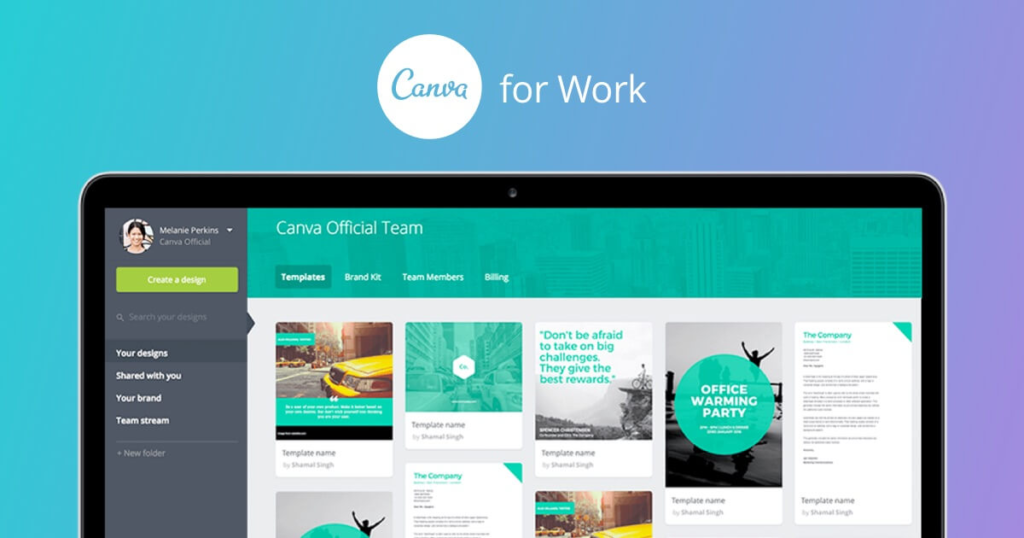
Infographics, images, quotes, and much more can be designed using Canva. You can also collaboratively work on designs using this app. Canva allows you to create up to 20 teams in the free version, and each team can have as many as 3000 members in it.
2. Crello (graphic design)
Another one on the list of social media marketing content creation tools is Crello. It has both a free and paid version. Like Canva, Crello is also a graphic design tool. While using Crello, you do not need any knowledge of graphic design.
The main advantage of using Crello is that it offers more than 10,000 free design templates, 11,000 design elements, and over 65 million stock images. To find out the free design templates in Crello, you can go to the ‘Inspiration’ tab.
Crello allows you to design collaboratively by inviting up to 10 members of your team to work on the same project simultaneously. But to use this feature in Crello, you have to subscribe to the paid plan. It also gives you access to a music and animations library.
While the free plan offers limited design elements, the pro plan starts at $9.99 per month and offers a wider selection of designs and animations.
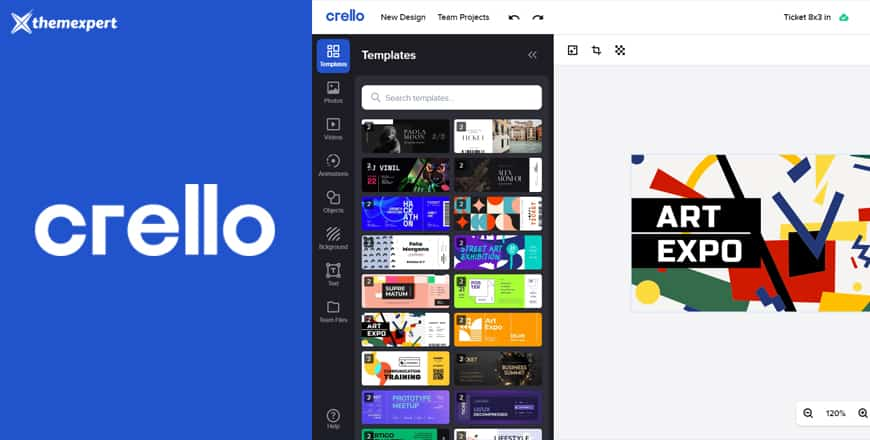
Crello allows you to download your designs in several file formats, including PDF, JPG, PNG, PNG transparent, gif, MP4, print PDF, etc. However, remember that with Crello’s free plan, you can only download five times in a month.
3. Hashtagify.me (finding hashtags)<h3>
Hashtagify.me, as its name suggests, is a hashtag search tool. While paid add-on features are available, this is mostly a free social media tool. After searching for a hashtag using Hashtagify.me, you can determine how popular the hashtag is and how you can use it.
You can search for a hashtag in the search bar and gauge its performance on different social media platforms. This tool also shows you a list of top influencers for the mentioned hashtag and also displays other relevant demographics. You can also sign up for hashtag alerts if you are a paid user.
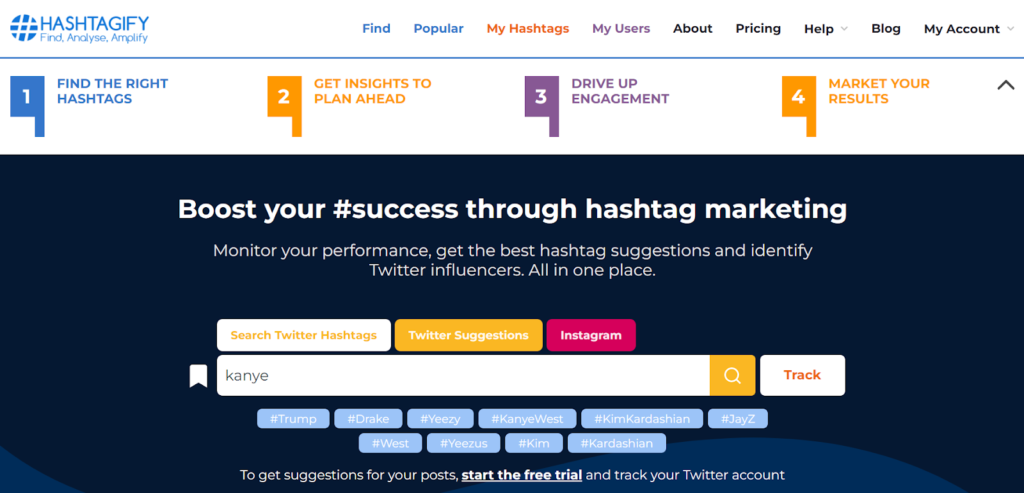
4. Prezi and Flipsnack (creating presentations, flipbooks)
Next on the list of tools for social media content creation is Prezi, which allows you to create standalone presentations. As a part of these presentations, you can also design interactive graphics and charts.
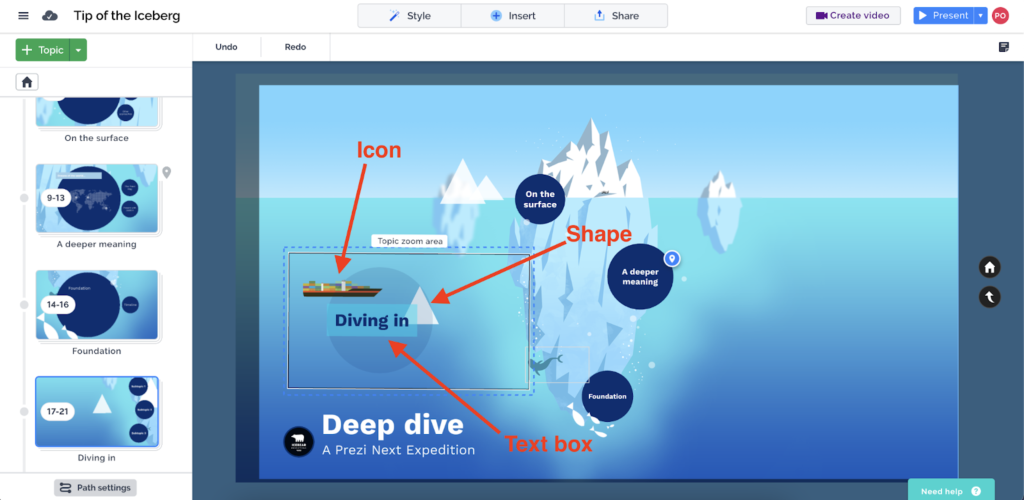
Presentations can also be created in collaboration. The app can be integrated with Zoom and Microsoft Teams as well. If you do not want to create new designs, Prezi also offers reusable designs and templates. It uses a map layout format for creating presentations, enabling you to zoom in and zoom out of different items within a presentation. While Prezi is a little more limited than PowerPoint, it is still an excellent tool for creating social media content.
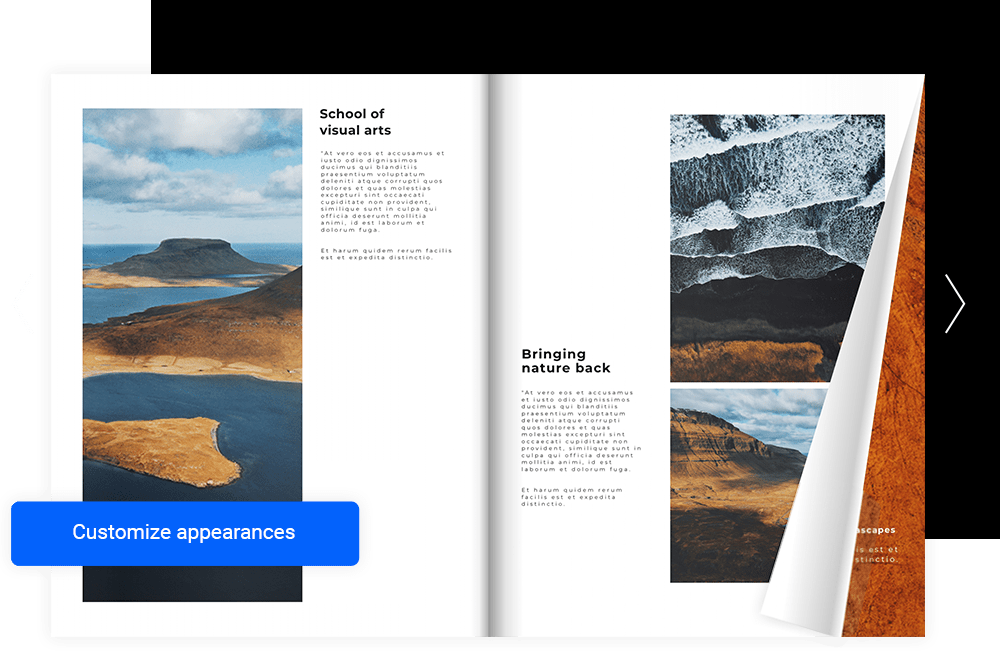
Another great tool for social media content creation is Flipsnack. It is a cloud-based publishing tool that can create and upload different types of publications. It has a PDF converter and editing tool included within it with has four subscription options—the Starter plan priced at $14 per month. One can choose from professional, business, and enterprise plans for more advanced features.
With Flipsnack, you can create and share online flip-page formats. You can also create magazines, flyers, catalogs, brochures, and even more.
5. Grammarly (editing and proofreading text)
All-in-one spellcheck, grammar, and editing tool, Grammarly is an excellent choice if you want to produce error-free social media copies. However, the app is not restricted to editing and correcting social media content. You can also use Grammarly for other work that concerns editing, proofreading, spellcheck, etc.
Grammarly not only helps you get rid of grammatical errors and wrong spellings, but it also has a feature that provides you with explanations about the errors. It has a free plan for individual users. You can opt for a business or a premium plan as per your requirement. The text accompanying the social media posts must be error-free and grammatically perfect.
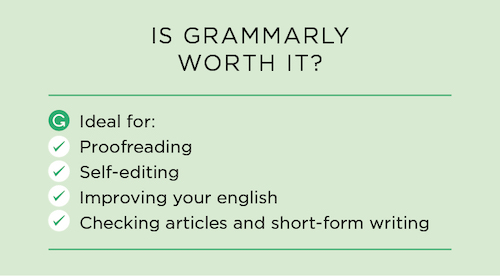
Benefits of Distributing Content on Social Media
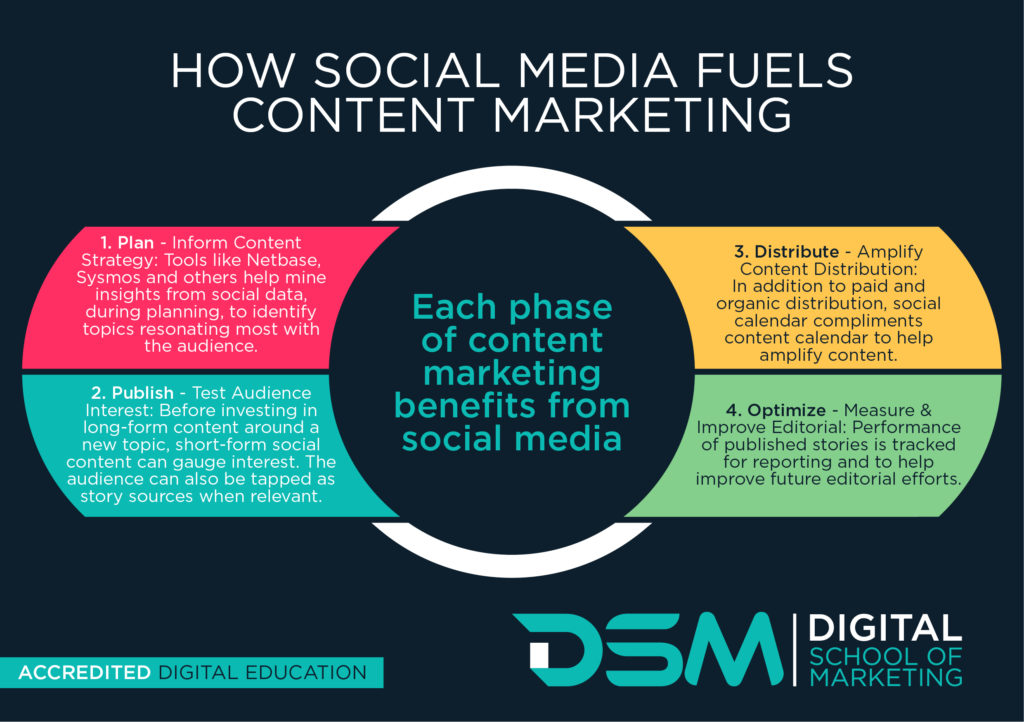
There are several benefits of distributing content on social media platforms. Some of them are as follows:
- With more than half of the world present on social media platforms, there can be no better place to increase brand awareness. Social media is the right place to reach out to your highly targeted audience.
- Businesses have become an institution in today’s world, and people look up to brands for insights and information. By championing social media entrepreneurship, a brand can establish itself as a thought leader in its particular industry or niche. LinkedIn is a great platform for this.
- Engaging social media posts can drive significant traffic to a brand’s website. Several brands have their website URLs added to their Instagram bios.
- Lead generation is another important benefit of distributing content on social media platforms.
- Social media posts can help convert visitors into potential customers at different stages of a brand’s sales funnel. Thus, distributing content over social media can boost sales.
- Having a social media presence also allows the brand to collaborate or partner with influencers. Social media influencers have a powerful presence on specific social media channels and enjoy a large following. They can be really useful in drawing the attention of their followers to your branch services and products. Unboxing videos and video recommendations are highly popular social media content types today.
- If a brand does not have a specific social media strategy, it can simply use the social media channels to promote its products and services.
- Social media platforms are also an avenue for the reputation management of a brand.
- The most important benefit of distributing content over social media is that it allows the brand to interact and engage with its customers. This can be done by responding to comments and mentions, replying to story tags, etc.
- Several brands also use social media as a customer support platform. Traditional customer service methods like text messages and calls are pretty redundant today; social media is better and more advanced to conduct a customer support operation.
- Distributing content on social media works in two ways. It not only allows your audience to know your brand more personally, but it also allows the brand to collect more information about the audience. Most use social media platforms for insights and analytics that can make data collection easier.
- Distributing content over social media allows brands to stay updated with the latest trends in their niche and stay in touch with what the competitors are doing.
Key Takeaways
- With the availability of several tools for social media content creation, one can save time and effort and still manage to create remarkably customized social media posts.
- Today, several brands have sophisticated social media strategies and social media content creation teams in place.
- Before creating social media content, you need to establish your objectives and goals behind posting content to social media channels. These goals should also align with your actual business goals.
- It is crucial to know the audience you will be posting content for. Creating buyer personas is a great way to know your audience thoroughly.
- Conducting a competitive analysis will give you an understanding of what type of content is acceptable in your niche.
- If your brand already has a social media presence, conducting a social media audit is necessary. Make sure that branding is consistent across all the social media handles.
- Make sure your social media posts reflect your brand’s voice and style.
- Use a social media calendar so you can see if your posts are properly spaced out and scheduled at an appropriate time for posting.
- Do not waste time creating posts that are not designated or suitable for a particular social media platform.
- Five amazing tools that can help you create compelling social media content include Grammarly, Canva, Crello, Hashtagify.me, and Prezi.
Conclusion
With social media content, brands have a greater chance of reaching out to a highly targeted audience in today’s fast-paced digital world. Distributing content over social media channels is almost necessary, if not obligatory, for brands to stay in constant touch with their customers. Therefore your social media posts must be carefully created.
With the help of content creation tools like Crello, Canva, Flipsnack, Prezi, Grammarly, and Hashtagify.me, you can create compelling social media posts, thereby driving significant traffic to your website. Great posts have the power to make the audience feel closer to the brand and understand the brand’s voice better.
FAQs
The top 10 content creation tools creators use today include Google Trends, Sigstr, Canva, Giphy, Grammarly, Hemingway editor, Pixlr, Moz keyword explorer, Trello, Microsoft snipping tool, etc.
Currently, the most popular content creation platforms are Instagram, Facebook, YouTube, Pinterest, Twitter, LinkedIn, and Snapchat.
Though social media content varies from platform to platform, the most widely viewed content types are videos, reels, announcements, live stories, photographic posts, infographics, video stories, etc.
Social media content can be broadly divided into seven categories. These are:
1. Interactive content
2. Inspirational content
3. Promotional content
4. Newsworthy content
5. Educational content
6. Entertaining content
7. Connecting content
Digital content creation is the process by which topic ideas that appeal to the audience are generated. Following which visual content is created based upon these ideas.
To make your social media posts interesting and engaging for the audience, click your own photographs, don’t forget to talk influences and bloggers related to your niche on the posts, recycle old content smartly, spark up your feed with a variety of content types, share stories promoting your posts, use the right hashtags and create interactive posts.
Latest Blogs
Explore how Google’s 2025 AI search updates triggered ranking chaos. Learn actionable strategies to adapt your SEO for AI Overviews, zero-click searches, and SERP volatility. Stay ahead now.
Learn how to rank on AI search engines like ChatGPT, Perplexity, and Gemini by optimizing your content for authority, structure, and relevance. Stay ahead in AI-driven search with this strategic guide.
Explore the best healthcare SEO services for your medical practice. Improve online visibility and effectively reach more patients in need of your services.
Get your hands on the latest news!
Similar Posts
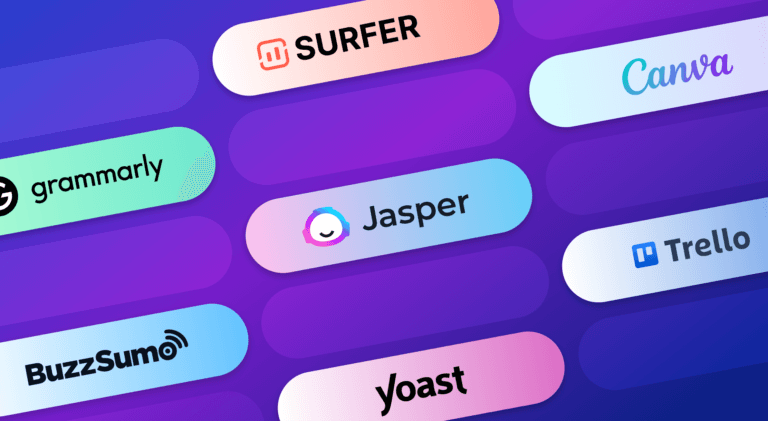
Artificial Intelligence
5 mins read
Enhance Your Writing Efficiency: Must-Have Content Writing Tools for Marketers

Marketing
5 mins read
9 Key Strategies To Increase Twitter Reach

Marketing
6 mins read